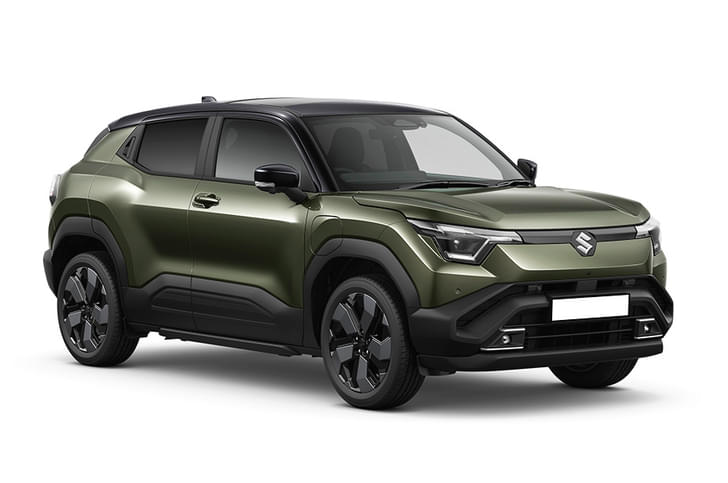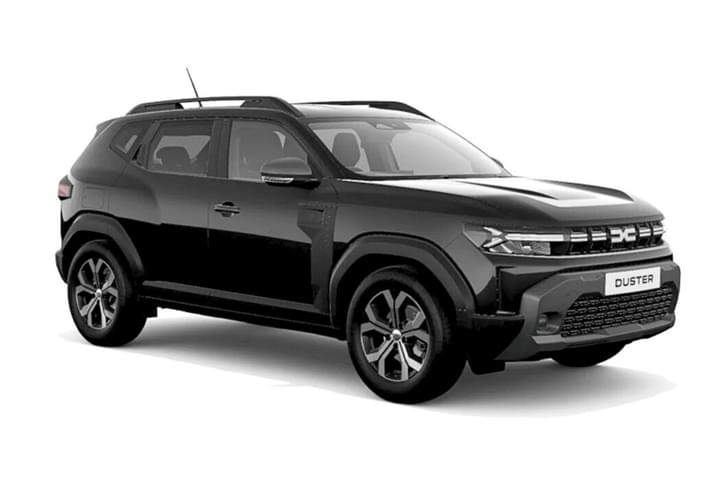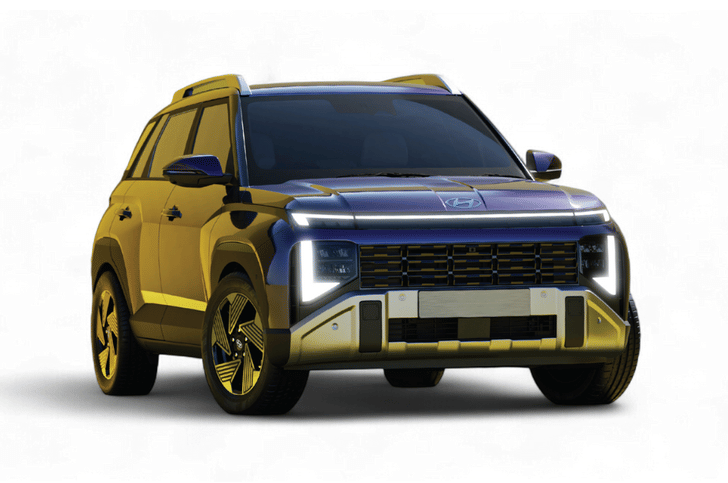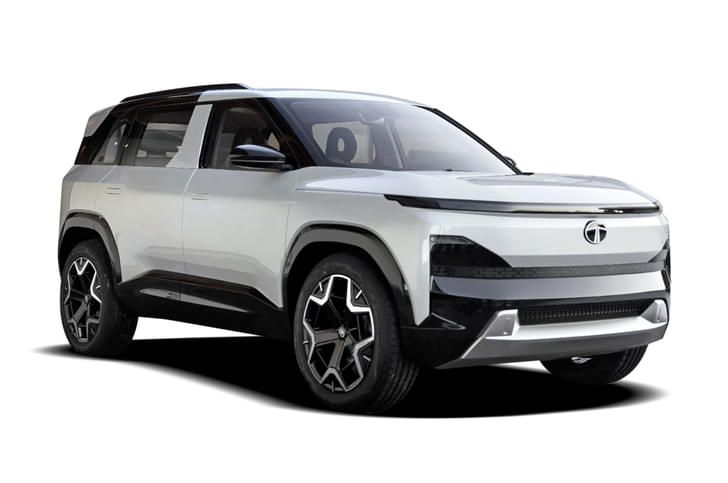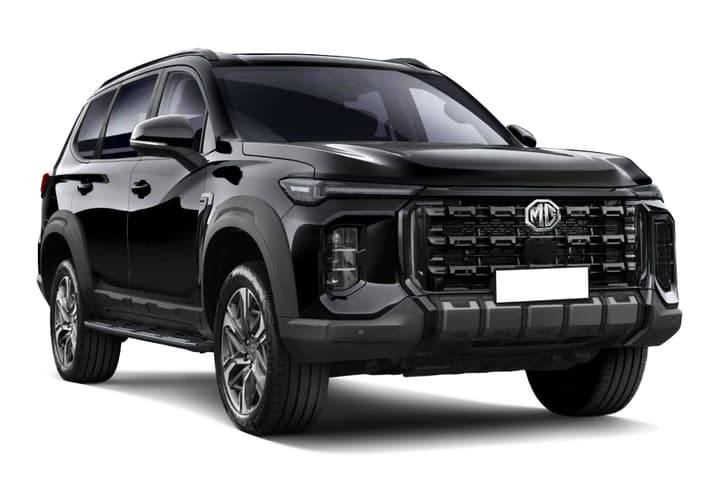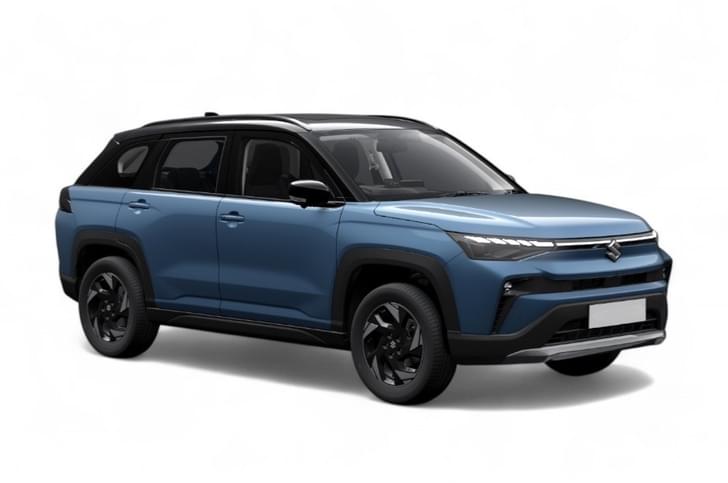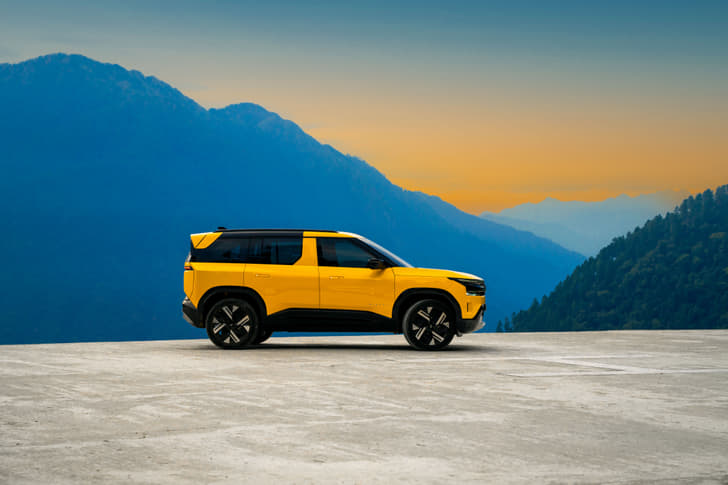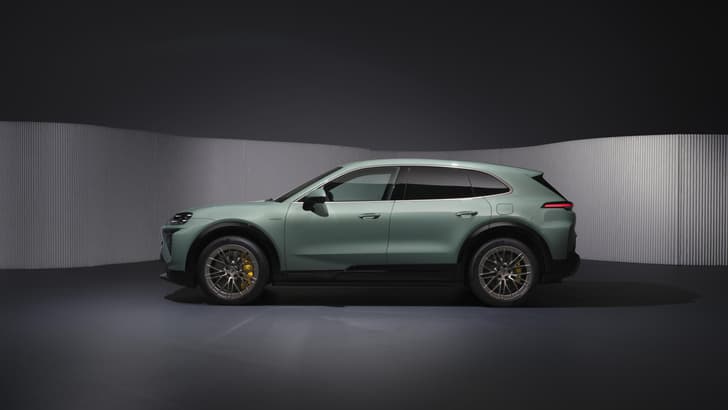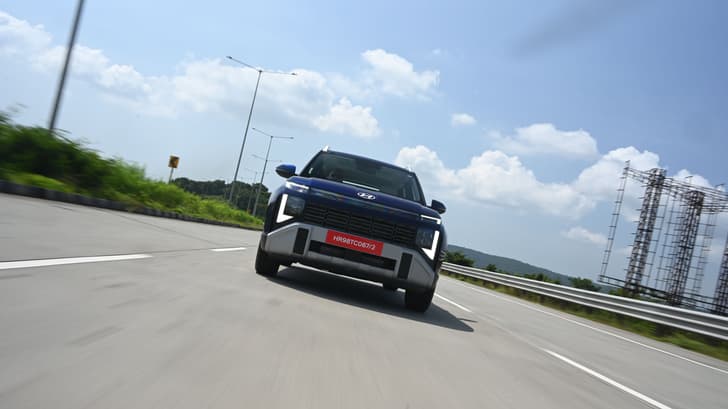Hyundai plans to introduce a total of 23 all-electric cars globally by 2025, and it has already taken the lead among manufacturers in India by introducing the country’s first all-electric premium crossover – the Kona. The crossover is priced at Rs 25.30 lakh (ex-showroom, India) and will be sold via 15 Hyundai dealerships in 11 cities only.
What is it?
The Kona appears to be a large hatchback with a crossover-like treatment rather than an SUV, as Hyundai likes to call it. Its split headlamps setup with slim indicators atop the LED projector look sharp, and what’s unique is that in place of an air dam seen in other cars, the Kona gets a neat body panel showcasing a ‘positive charge’ pattern. And what’s cool is that this section also houses the charging socket. The 17-inch wheels look very stylish and so do the slim LED tail-lights. The Kona has been given a fair bit of SUV-like treatment with roof rails, beefy body cladding and has a generous ground clearance of 172mm (unladen). However, despite that, its shorter height and swoopy windows give it a silhouette of a raised i20 Active rather than a Creta. Even its dimensions are relatively compact and measuring 4,180mm in length, it is shorter than the Creta. It, however, is wider and has a longer wheelbase too.

What is it like inside?
Get into the cabin and there are a lot of bits from other Hyundais. The steering and some of the switchgear are shared with the cheaper Venue SUV, and fit-finish is largely good. There’s a nice, soft-touch panel on the dashboard fascia, but the plastics are hard. And while quality seems fine, we’d have expected the Kona to come with more premium materials, especially considering its price tag. The digital instrument cluster is easy on the eyes. The floating touchscreen's interface is slick and it even gets physical shortcut buttons to run through the menus, but it sticks out like a sore thumb. Curiously, the Blue Link sim-based connectivity tech that was recently introduced with the Venue hasn’t been made available on the Kona. The silver buttons for climate control feel nice to use and break the all-black monotone theme. And just like the new Honda CR-V, the transmission uses a rather simple set of buttons; this arrangement helps liberate storage space on the console, and there’s even a large storage shelf beneath it.

The Kona's front seats are shared with the Elantra sedan, so the driver’s side gets electric adjust, and both the seats are ventilated; it gets a heating function too. While the seats are wide, side bolstering isn’t generous, and because of the sunroof, front headroom for taller occupants is a bit tight. Rearward visibility is slightly compromised too due to the slim rear windscreen.
Step into the rear, and the Kona's other weaknesses are revealed. The door cavity is a bit narrow, and because of the raised floor height (to accommodate the battery pack), you’re seated quite low, in a knees-up position. Knee- and legroom are tight, and there’s no space under the front seats for passengers to tuck their feet in. Its 332-litre boot is large enough to haul a family’s weekend luggage, and the Kona gets a space-saver beneath the boot floor.

In terms of equipment, the Kona is loaded with standard safety kit like six airbags, ABS with EBD, ESP, and hill-start assist, all expected in a car of this class. Premium kit includes automatic LED lights, 17-inch alloys, a sunroof, heated and cooled front seats, 10-way powered driver’s seat, touchscreen with Android Auto and Apple CarPlay, tyre pressure monitor, digital instrument cluster, auto-dimming mirror, cruise control and a lot more. What's unique on the Kona is that climate control has a function that lets you channel air only in the driver region.

What is it like to drive?
In international markets, Hyundai offers the Kona electric in two configurations – with a long-range 64kWh battery and standard range 39.2kWh battery. India, however, will only get the 39.2kWh battery. In the ARAI test cycles, the Kona has achieved a range of 452km on a single charge, but this number has been achieved at a max speed of 50kph, under standard conditions. In the real world, 300km seems more realistic, which is still remarkable for an electric SUV.

Start the car up and, like other electric cars, there’s an eerie silence in the cabin. The motor produces 136hp, but what’s more interesting is that it makes 395Nm from the go, so it’s very responsive. Drive it in a sedate manner and the Kona rewards the driver with a refined and smooth driving experience. The build-up of speed is instant, so every flex of the right foot has a corresponding reaction without any delay. Every time you put your foot down, the front tyres inevitably chirp as they try to cope with all the instant performance transmitted. The Kona is said to accelerate from 0-100kph in an impressive 9.7sec, and there’s little to doubt this claim. Pedal to the metal, the car managed to achieve 150kph on the back straight of the Buddh International Circuit (BIC) rather effortlessly.

There are four driving modes – Eco Plus, Eco, Comfort and Sport – all of which alter the engine responsiveness as well as the regenerative braking intensity. In Eco Plus mode, the max vehicle speed is restricted to 90kph, and the air-con turns off to maximise range (can be turned on manually); regenerative braking too is maximum in this mode. This mode is particularly handy when low on charge. Sport mode has a noticeable surge in performance, with the sharpest throttle responses and the least amount of regenerative braking.

It’s even possible to drive the Kona with just the one pedal (the accelerator), thanks to regenerative braking function. Paddleshifters are offered; they aren't used to change gears but to alter the intensity of regenerative braking. Uniquely, it’s even possible to brake and come to a complete halt by pulling the left paddle. The actual brakes feel a bit grabby, but there’s some lull in the pedal feel initially.

Our driving was limited to the race track, so while we can’t comment on the Kona's ride comfort, we did get a taste of its handling and dynamics. The Hyundai Kona feels willing to change direction, and although the steering isn’t the sharpest one around, it is light and weights up consistently with speed. Also, because the battery packs are placed below the seats within the wheelbase, the centre of gravity of the car is low, making body roll negligible around corners.

A 7.2kW wall-box charger and a 2.8kW portable charger are provided with every Kona. Hyundai also assists with the installation of the wall box charger, which can be set up at the user's residence or office. It takes a little over 6 hours to charge the Kona from 0-100 percent. If buyers wish to buy an additional wall box, it'll cost them about Rs 80,000. The portable charger that’ll fit into any 15 ampere 3-pin socket would take 19 hours to charge the battery completely. There’s even a DC fast-charging option; it can reach almost 80% charge in merely 57min. However, for the time being, these are few and far between. Indian Oil will have one fast-charging facility in four metro cities, and so will the 15 Hyundai dealers in the 11 cities which sell the Kona.

What’s the upkeep like?
Hyundai is offering a 3-year standard warranty on the Kona, with no restriction on the kilometres. In addition, there’s an 8-year/1,60,000km warranty on the battery pack. We’re told that its battery life is 12-13 years or 2,000 cycles, which means 2,000 full charges from 0-100 percent; this means, in theory, the battery should last for over 9 lakh kilometres. Those concerned about regular upkeep would be happy to know that it would cost Rs 7,407 annually to service the Kona, and that specific training has been imparted to certain dealers.

Should I buy one?
If you’re looking for a posh secondary car that'll be an urban runabout, the Hyundai Kona electric is rather competent. It is compact in dimensions and feature-rich. Think of it as a competitor to cars like a Mercedes A-class or the now-discontinued Volvo V40 Cross Country, and you’ll see it in the right light. Yes, it does miss the snob value, but what really strengthens the Kona’s case is that it is 100 percent electric, so it comes with a feel-good factor of being clean and green. What’s more important is that it is practical with an impressive travel range, and this, to an extent, takes care of the ‘range anxiety’ associated with electric vehicles. Its Rs 25.30 lakh price tag makes it appear pricey at first, but when you factor in its green credentials, the technology on offer, the warranty packages, and the low running costs, the Kona makes a compelling case for itself. All said, the Hyundai Kona is an EV that you'd want to buy.
| Factfile | |
|---|---|
| Price | Rs 25.30 lakh* |
| Length | 4180mm |
| Width | 1800mm |
| Height | 1570mm |
| Wheelbase | 2600mm |
| Tyres | 215/55 R17 |
| Motor type | Permanent magnet, synchronous motor |
| Power | 136hp |
| Torque | 395Nm |
| Gearbox | Automatic, Single speed reduction gear |
| Battery Type | Lithium-ion |
| Battery Capacity | 39.2kWh |
| AC charging (0-100%) | Approx 6h 10min |
| DC charging at 50kW (0-80%) | Approx 57min |
| Suspension (f/r) | McPherson strut/Multi-link |
| Brakes (f/r) | Disc/Disc |
*Prices are introductory and ex-showroom, pan-India
Click here for Hyundai India models, prices, reviews, images, videos and more



























